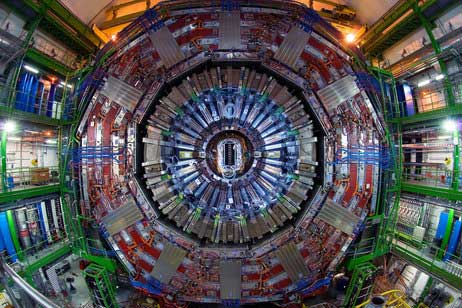What is the Higgs boson and why does it matter? (in simple terms)
If you remember basic chemistry, the atom is made up a proton, neutron, and electron. Those were the basic building blocks of life when I was a kid. I remember illustrations showing the neutron and proton in the center with the electron orbiting around it.
In the 1960’s several physicists starting thinking about things smaller than atoms, called sub-atomic. They developed several theories about these sub-atoms until the 1970s, when one model stood out. This is called the Standard Model of physics.
In that model, there are 12 particles and 4 forces. The particles are called quarks and leptons, and the forces are called – strong, weak, gravity, and electromagnetic.
The forces are the most important because they describe some pretty amazing things. For example, the electromagnetic force is carried by a particle of light, called a photon. The photon has infinite range and great strength, giving the light of stars the ability to travel thousands of light years to be seen on Earth.
The force of gravity is carried by a particle called a graviton. It also has an infinite range but a very weak strength. For example, the Sun exerts a powerful pull on the Earth because it is very close, but when you get farther away that strength becomes minimal. It does not have the range that the photon does.
Both of these particles, and all of the particles that involve energy, are called bosons. These bosons are sub-atomic particles that transfer energy to each other.
Now, the interesting thing is figuring out why these photons can travel for infinite ranges, when other particles can barely keep moving.
The leading theory, calls for a Higgs field that covers the entire universe. It is an energy field made up of a particle called the Higgs boson. When a particle travels through the universe it either attracts the Higgs boson or pushes it away. If it attracts the Higgs boson then they combine to form matter and gain all the properties of mass (weight, gravity, etc.). If it repels the Higgs boson then it continues to travel as a form of energy over an infinite range (light).
The combination of the Higgs boson with other particles creates life as we know it, the matter that makes up humans, plants, rocks, etc. This is most likely the reason why it has come to be called the “God particle.”
The forces that ignore the Higgs boson do so at varying degrees. Photons of light ignore it completely. Other particles attract some Higgs bosons and slow down, eventually limiting their range and strength.
Of course, none of this was certain because scientists were unable to see the Higgs boson. Being a sub-atomic particle it is invisible to the naked eye and undetectable in a lab. It puts us in a weird predicament, how do you find something that you are not even sure exists?
CERN’s Large Hadron Collider solves that problem for us. This gigantic particle accelerator allows us to speed up particles and smash them together. Specifically, it smashes together hadrons which are multiple particles combined together.
When these particles are smashed together the scientists observe what happens. If everything acts like the Higgs theory says it does (i.e. there is a Higgs field with Higgs bosons that slow some particles but not photons), then they have proof.
With that proof the scientists of the world can move on to other more complex problems. Areas where this model falls short like with dark energy or the full theory of gravitation.
Another step in our greater understanding of the world. Each one allowing us to do more with energy, matter, and life.
Sources: CERN – the Standard Model, Guardian – What is the Higgs boson?, CERN – the Higgs boson, Wikipedia – Higgs boson
